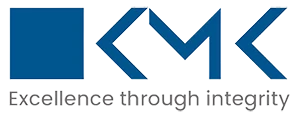Short-Term Cash Flow, Long-Term Stability: Mastering the 13-Week Forecast

Whether you’re a lean startup, a scaling SaaS firm, a services company, a manufacturer managing supply chains, a hotel navigating seasonal demand, or even a medical practice balancing reimbursements and payroll — cash flow is your operational heartbeat. And yet, many businesses — even the well-established ones — often underestimate the power of short-term cash forecasting.
13-week cash flow model — a simple yet powerful tool that provides real-time insights into your business’s liquidity. In uncertain markets, tight lending environments, or periods of aggressive growth, it shifts from a helpful tracker to a critical lever for making confident, timely decisions.
What is a 13-Week Cash Flow Model — and Why It’s So Effective?
The 13-week cash flow model (often called a TWCF) is a rolling weekly forecast that shows how much cash your business expects to receive and spend over the next 13 weeks.
It’s simple in design but strategic in impact.
Unlike annual or monthly forecasts, which are helpful for high-level planning, a 13-week model gets tactical. It zooms in on real-time cash movement, week by week. This lets you see precisely when a shortfall may occur or when a cash surplus can be strategically deployed.
- Long enough to identify upcoming risks and opportunities
- Short enough to forecast with reasonable accuracy
- Aligned with daily operational functions like payroll, rent cycles, vendor terms, and collection periods
Most importantly, it helps you answer questions like:
“Can we afford this hire next month?”
“What happens if a customer delays payment by 2 weeks?”
“Will we have enough liquidity to cover upcoming loan payments?”
With weekly cash visibility, your business shifts from reactive to proactive in day-to-day operations.
Who Should Use It? (Spoiler: Everyone)
While 13-week cash flow models are often associated with startups or distressed companies, the reality is any business that wants tighter cash control should use it.
It’s a powerful tool for:
- Startups managing burn and investor funds
- Service businesses balancing receivables and fixed costs
- Retailers with seasonal peaks and dips
- Manufacturers juggling inventory and payables
- Private equity portfolio companies driving returns through better cash visibility
This model is for you if your business handles cash in any form.
Benefits:
- Cash Visibility: Understand how inflows and outflows affect your cash position weekly.
- Informed Decision-making: Can you afford to hire? Delay a vendor payment? Accelerate collections? The model has answers.
- Enhanced Stakeholder Confidence: Show banks, boards, and investors that you’re managing liquidity proactively.
- Early Warning System: Spot cash crunches long before it happens — ensuring you can take action early, not when the bank balance is already in the red.
Key Inputs That Power the Model
A successful 13-week cash flow forecast relies on accurate and realistic input data. Here’s what you need to include to ensure your model is comprehensive: –
Inflows:
- Customer Payments: Forecast cash inflows based on due dates, historical payment patterns, and expected collection dates.
- Loans or Equity Investments: Include any incoming funds from loans, credit lines, or equity investments.
- Grants, Refunds, or Tax Credits: Account for any grants, tax refunds, or credits expected during the period.
- Other Income: Cash inflows from different sources, such as interest income from savings or investments and dividends from equity holdings.
Outflows:
- Payroll & Taxes: Account for employee salaries, contractor payments, and associated tax liabilities.
- Rent and Utilities: Include fixed monthly expenses like rent, electricity, water, and other utilities.
- Vendor Payments: Consider outstanding payments to suppliers aligned with their specific due dates.
- Marketing, Software, and CAPEX: Plan for recurring operational costs such as marketing campaigns, software subscriptions, and capital expenditures.
- Loan Repayments: Include scheduled repayments for business loans or lines of credit.
- One-off or Seasonal Expenses: Factor in any irregular costs that could arise, such as one-time purchases or seasonal spikes in activity.
Remember, tracking expected payment dates is crucial, not just invoice dates. Cash doesn’t always come when the bill is sent — partner with KMK’s experts to ensure your model reflects when payments are received. We help you stay ahead of potential cash flow surprises by keeping a close check on your payment schedules.
How to Build a 13-Week Cash Flow Model
Building a 13-week cash flow model isn’t complex, but it does require attention to detail and a solid understanding of your business’s inflows and outflows. Here’s a simple framework to get you started:
- Start with Your Cash Position: Calculate your starting cash balance for the first week of the Forecast. This will be the baseline for tracking all incoming and outgoing cash.
- Project Your Inflows: Use historical data to forecast incoming cash from customers, loans, equity investments, and other sources. For customer payments, focus on due dates and collections timing — not just when the invoice is sent.
- Estimate Outflows: List your expected business expenses — payroll, rent, vendor payments, taxes, and any one-off or seasonal costs. Again, align these with their due dates, not just when the invoices are received.
- Consider External Factors: Consider how external factors might impact your cash flow. For instance, these may be upcoming economic conditions, client payment delays, seasonal sales cycles, or unexpected capital expenditures.
- Build and Track Your Model Weekly: Start tracking cash flow weekly once you’ve set your inputs. Compare actual cash movements against your Forecast to identify discrepancies and adjust for the following weeks. This will give you a real-time view of your cash position and allow you to make quick, informed decisions.
With this approach, you’ll turn cash flow uncertainty into a clear, actionable plan, empowering you to make decisions every week confidently.
Read Also: Why Outsourcing Your Year-End Financial Statements Is a Smart Business Move
Why Partnering with KMK Experts Makes a Difference
Building and maintaining an accurate 13-week cash flow model requires time, focus, and expertise. That’s where KMK Ventures comes in. Our experienced team works with you to create a customized cash flow forecast tailored to your business’s unique needs and challenges.
The 13-week cash flow forecast is a powerful tool for managing short-term liquidity and ensuring long-term stability. By providing real-time visibility into cash movements, we help you stay ahead of potential shortfalls, plan for upcoming expenses, and make confident decisions that keep your business on track.
KMK’s expert team will accurately forecast your inflows and outflows and refine your model over time to respond to changing business dynamics. From identifying key financial risks to offering proactive strategies, we ensure you’re always one step ahead.
Don’t wait for a cash crisis to strike. Schedule your 15-minute consultation with KMK Ventures today and start mastering your 13-week cash flow model for a more stable tomorrow.
 Ayush Mehta is a Chartered Accountant with a strong foundation in financial operations, stakeholder management, and strategic growth. At KMK Ventures, he manages client delivery for U.S.-based businesses, managing cross-functional teams and ensuring smooth execution of projects. With over seven years of professional experience, Ayush is key in building scalable solutions for startups, particularly in reporting and cash flow management. He is passionate about mentoring emerging talent and simplifying complex financial topics for C-suite teams. Outside work, Ayush finds joy in the outdoors—embarking on hiking expeditions to push his limits, embrace solitude, and connect with nature.
Ayush Mehta is a Chartered Accountant with a strong foundation in financial operations, stakeholder management, and strategic growth. At KMK Ventures, he manages client delivery for U.S.-based businesses, managing cross-functional teams and ensuring smooth execution of projects. With over seven years of professional experience, Ayush is key in building scalable solutions for startups, particularly in reporting and cash flow management. He is passionate about mentoring emerging talent and simplifying complex financial topics for C-suite teams. Outside work, Ayush finds joy in the outdoors—embarking on hiking expeditions to push his limits, embrace solitude, and connect with nature.
Let’s Take Our Conversation Ahead
KMK is a top outsourced accounting and tax service provider. We offer end-to-end accounting and tax services for small to mid-sized businesses, with a team of 875+ professionals, including certified public, chartered, and staff accountants.
USA:
651 N Broad St Suite 205, Middletown, DE 19709, USA
Phone: 310-362-2511
India:
300, Sankalp Square-3B
Sindhu Bhavan Marg,
Ahmedabad, Gujarat 380058
For Career: 91-98240-42996
Developed by Bluele | Copyright © 2025 | KMK Ventures Private Limited. | All Rights Reserved


